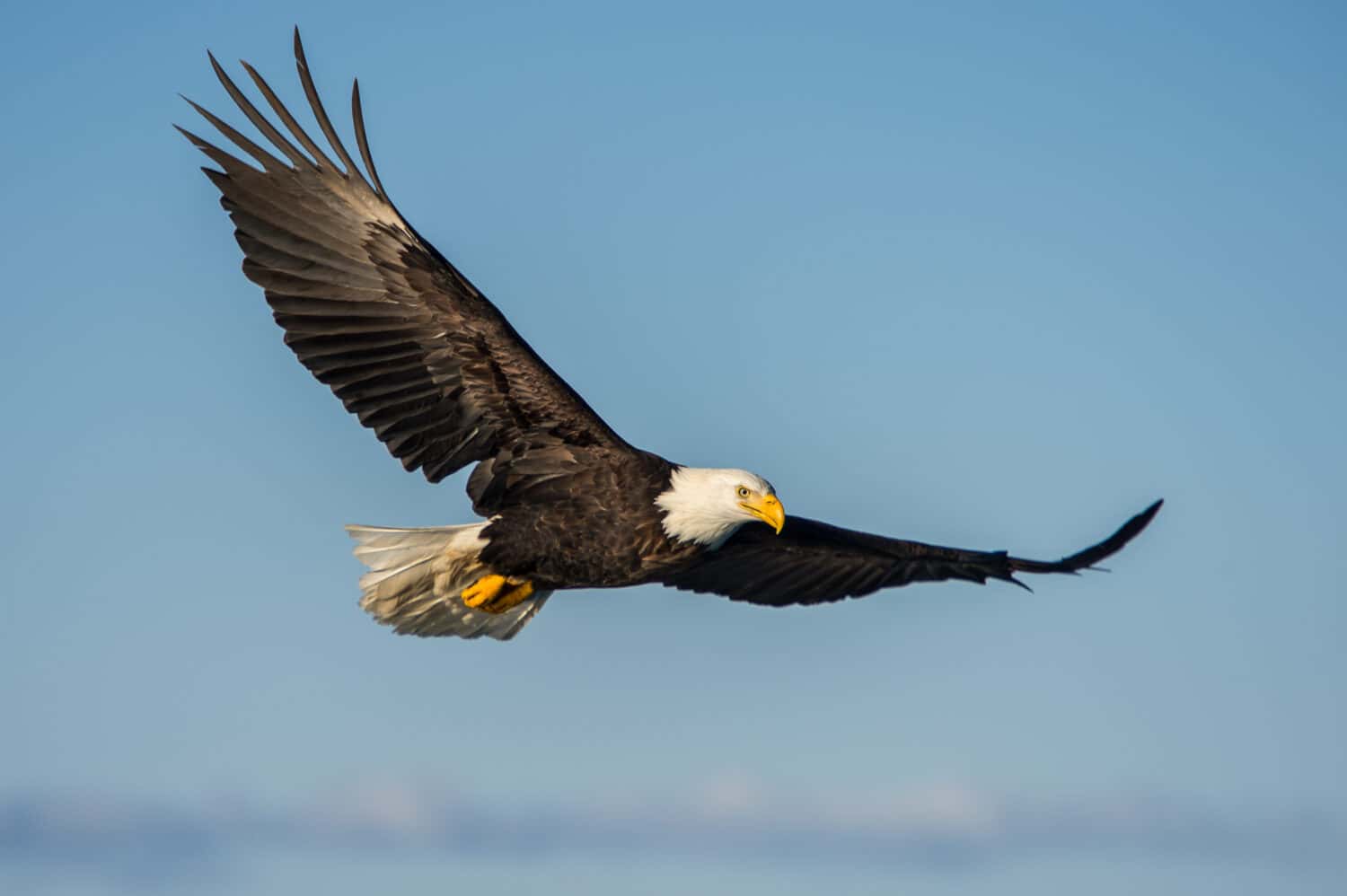Florida, renowned for its diverse wildlife and breathtaking natural landscapes, is also home to the majestic bald eagle. As America’s national bird, bald eagles are not only a symbol of strength and freedom but also a remarkable sight for nature enthusiasts and birdwatchers. Let’s delve into the best places to witness bald eagles in Florida.
1. Lake Okeechobee

With its large size, Lake Okeechobee provides plenty of nesting sites for bald eagles.
©Mark Kostich/iStock via Getty Images
Lake Okeechobee, Florida’s largest freshwater lake, is a bald eagle haven. Stretching over 730 square miles (1,891 square kilometers), this immense water body offers a perfect habitat for bald eagles due to its abundance of fish and other aquatic prey. The lake’s vast expanse and surrounding wetlands make it a crucial location for these majestic birds to thrive.
Visitors to Lake Okeechobee have the opportunity to witness bald eagles in various natural behaviors. One common sight is eagles perched on the towering cypress trees that line the lake’s shores, offering excellent vantage points for hunting. As you explore the area, keep a keen eye on these prominent trees, and you may spot an eagle observing the water for potential prey or feasting on a catch.
Lake Okeechobee also offers unique opportunities for wildlife enthusiasts to engage in eagle-watching. Various guided boat tours operate in the region, providing an immersive experience and a chance to view bald eagles in their natural habitat up close. These tours often provide insights into the eagles’ behavior, nesting habits, and the significance of Lake Okeechobee as a critical wintering ground for these magnificent birds.
In addition to bald eagles, Lake Okeechobee is home to a diverse range of bird species, making it a birdwatcher’s paradise. It’s also common to spot ospreys, herons, egrets, and many waterfowl while exploring the lake’s surroundings.
Remember to bring binoculars or a spotting scope to enhance your view from a distance. Always respect the wildlife and their natural habitats by maintaining a respectful distance and refraining from disruptive activities. By appreciating these incredible creatures in their natural environment, visitors contribute to their conservation and the preservation of Lake Okeechobee’s unique ecosystem.
2. Myakka River State Park
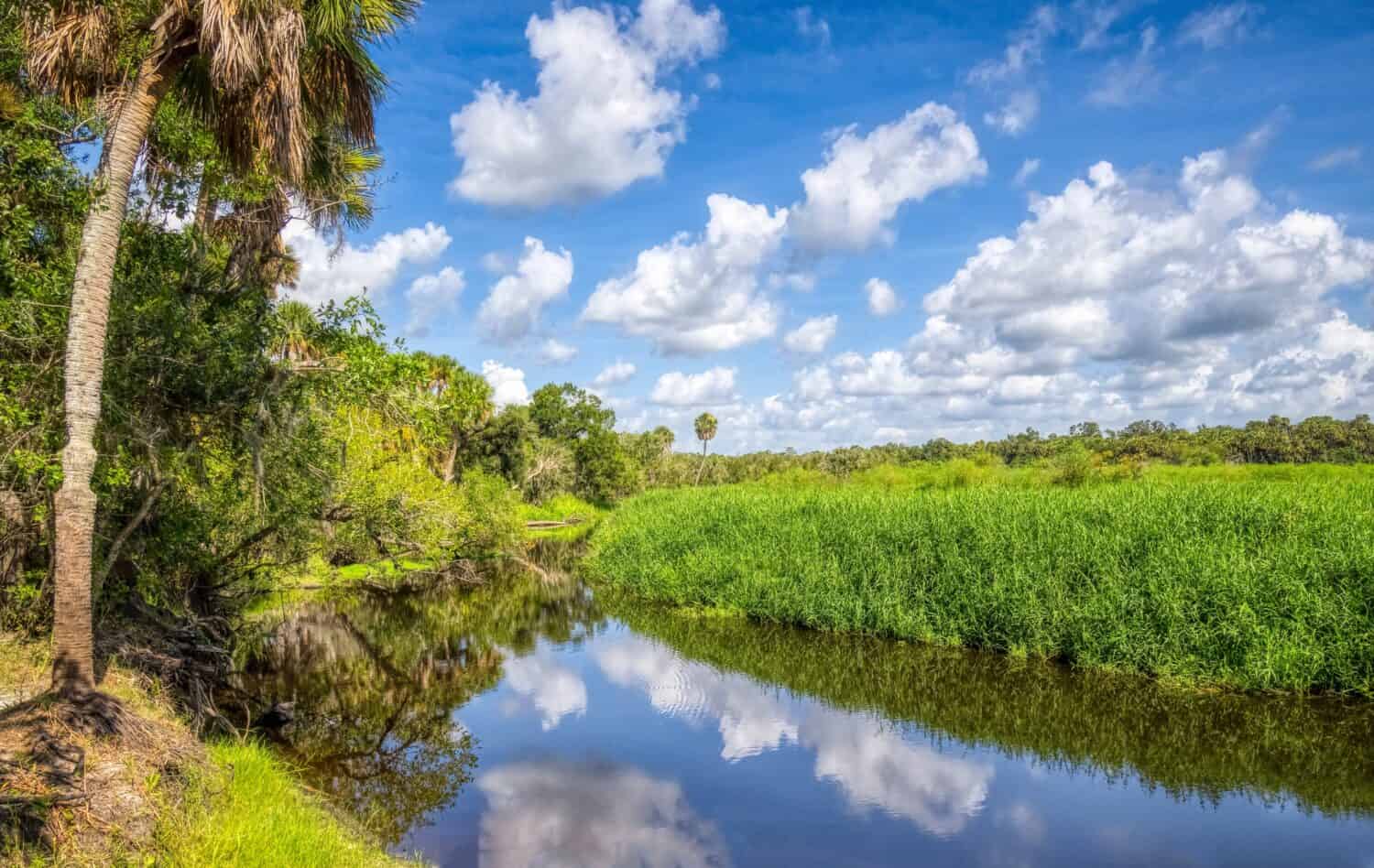
Bald eagles always live near bodies of water.
©Jim Schwabel/Shutterstock.com
Myakka River State Park, located along Florida’s Gulf Coast, stands out as one of the most picturesque and ecologically diverse state parks in the Sunshine State. While renowned for its expansive wetlands and diverse wildlife, the park is also a prime destination for bald eagle enthusiasts.
The park’s unique blend of habitats, including wetlands, prairies, and hardwood hammocks, provides an ideal environment for bald eagles to thrive. They can often be observed perched on tall pine trees or gliding over the serene waters of the Myakka River. Their distinctive white heads and tails make them stand out against the lush green backdrop of the park.
One of the best ways to experience bald eagles at Myakka River State Park is by taking a scenic boat tour on Upper Myakka Lake. These tours offer an up-close view of these magnificent birds and provide insights into the park’s rich natural history. The guides are knowledgeable about the local wildlife, including bald eagles, and can help visitors spot these raptors during their excursions.
The park’s extensive trail system also offers ample opportunities for hikers and birdwatchers to encounter bald eagles. The Myakka Canopy Walkway, a suspension bridge that allows visitors to explore the treetops, provides a unique vantage point for birdwatching. It’s common to spot bald eagles nesting in the tall trees while enjoying this elevated perspective. Keep a pair of binoculars and a camera handy to capture the mesmerizing moments when these birds are in action.
3. Everglades National Park
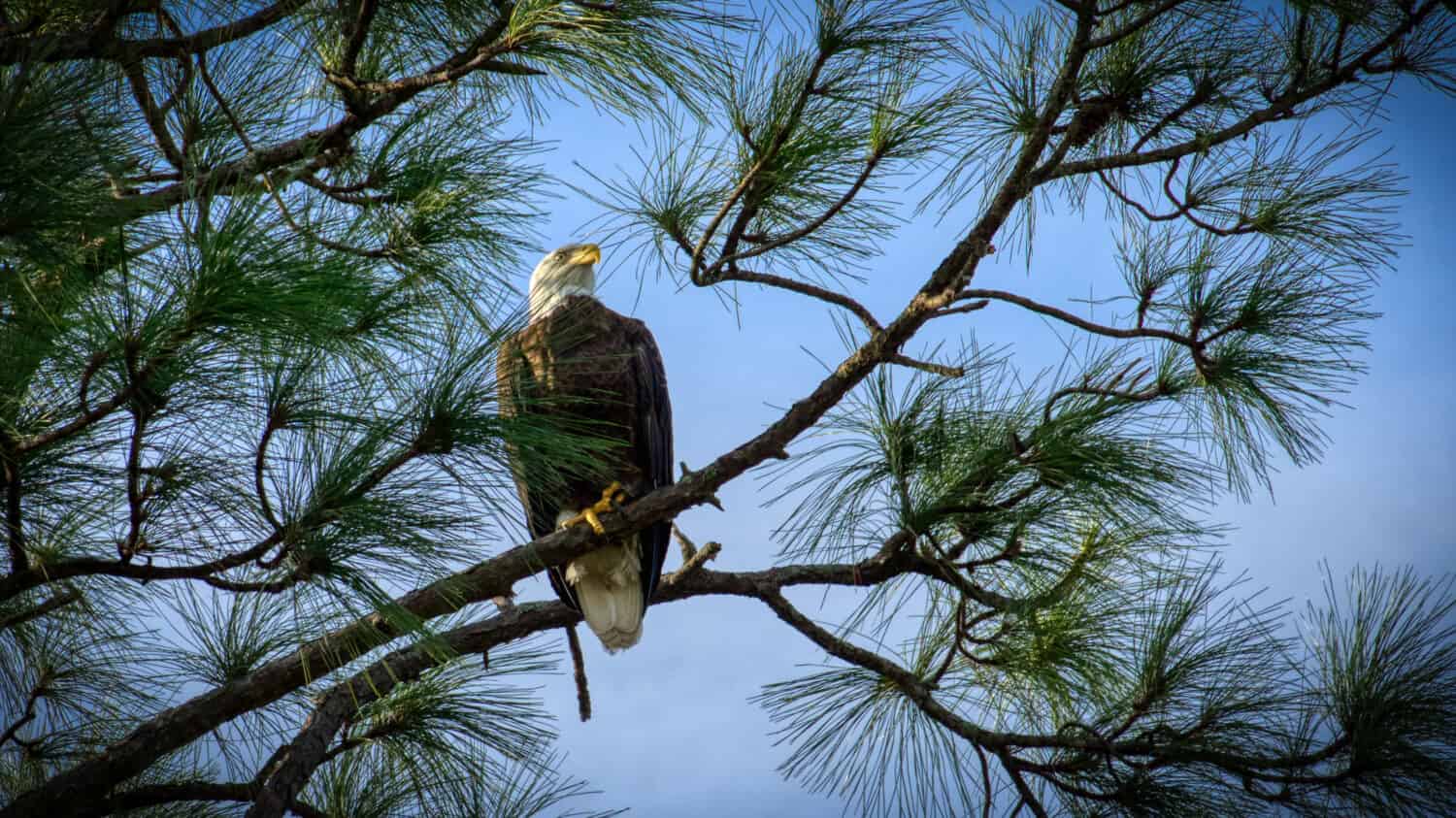
Eagles sometimes use specific trees as “sentry” perches, providing them with lookout points.
©WebGuNet/Shutterstock.com
Everglades National Park, a UNESCO World Heritage Site, is famous for its iconic alligators. But the park also has unique wildlife and a flourishing population of bald eagles. These eagles often gracefully soar above the park’s vast wetlands, diligently searching for prey.
One of the prime locations within the park to spot bald eagles is the Anhinga Trail. This accessible boardwalk trail takes visitors through a diverse landscape of marshes and sawgrass prairies, offering excellent opportunities for birdwatching. Along this trail, you’ll often encounter eagles perched in tall trees or flying overhead. Their impressive wingspans, striking white heads, and tails make them unmistakable and awe-inspiring sights.
Another fantastic area for eagle watching within Everglades National Park is Shark Valley. Visitors can hop on a guided tram tour or rent a bicycle to explore the park’s unique “River of Grass” ecosystem. Bald eagles frequently patrol this area in search of prey, making it an excellent spot to observe their hunting behaviors. Keep your binoculars handy, as you may also witness other diverse bird species, such as herons, egrets, and ospreys, sharing the skies with the eagles.
Bald eagles are protected by federal law, including the Bald and Golden Eagle Protection Act, which prohibits any form of harassment or disturbance to these birds. When visiting Everglades National Park, always maintain a respectful distance and avoid disturbing their nests or feeding areas. These ensure their continued protection for future generations to appreciate.
4. St. Marks National Wildlife Refuge
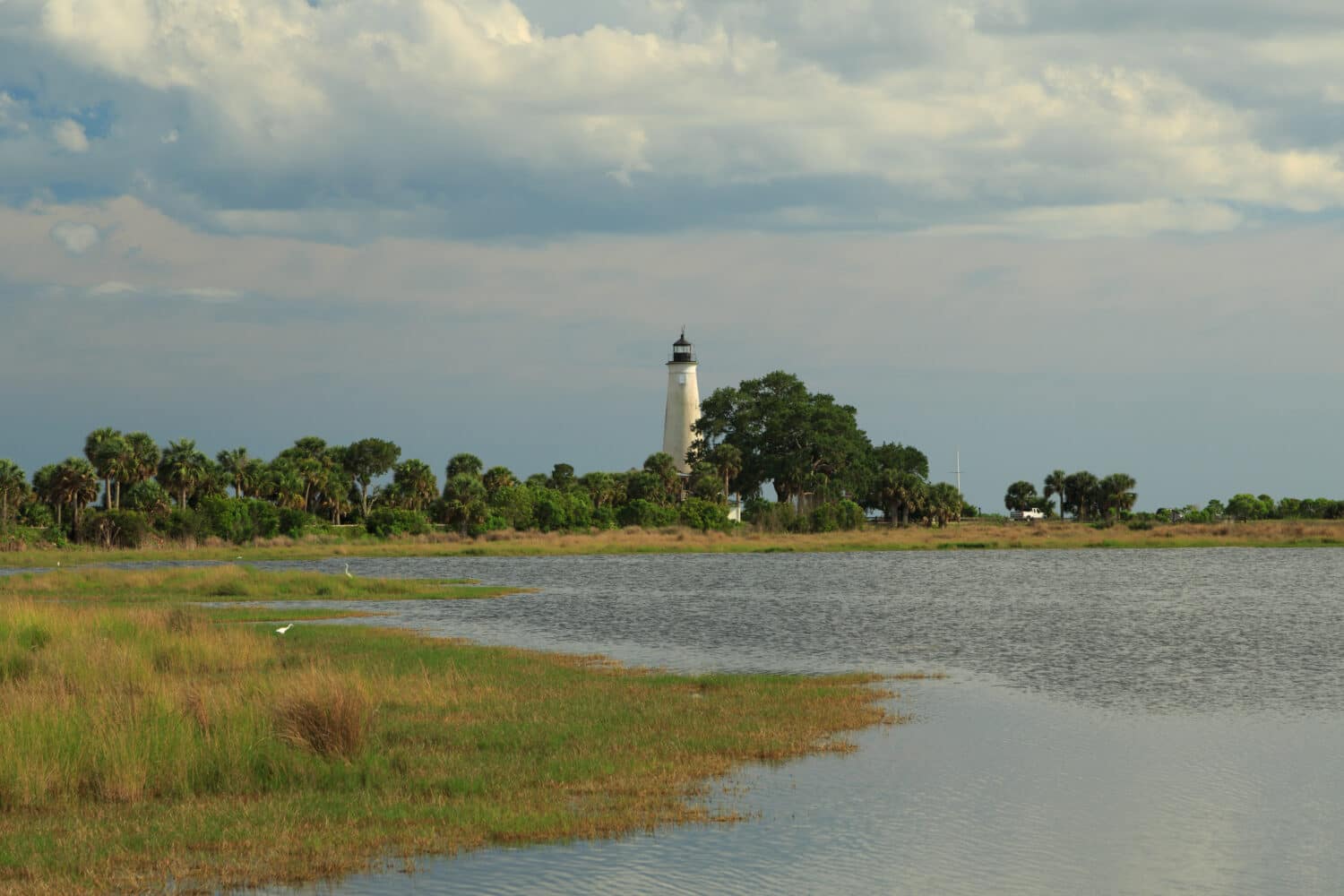
St. Marks National Wildlife Refuge offers several trails to discover its wildlife, including bald eagles.
©Stephen Allen Photography/Shutterstock.com
Located in Florida’s Panhandle, St. Marks National Wildlife Refuge serves as a sanctuary for both resident and migratory bald eagles. This refuge encompasses various habitats, from salt marshes to pine forests, attracting diverse wildlife, including eagles.
Bald eagles have found an ideal haven within the refuge’s boundaries, thanks to its abundance of food sources, serene waterways, and secluded nesting sites. Visitors can observe the eagles while flying over the waters or perching on tree branches overlooking the salt marshes.
The refuge has a network of trails and observation platforms that provide visitors with excellent vantage points for eagle sightings. The Lighthouse Road Trail and the Stoney Bayou Trail are particularly popular for eagle-watching. They offer expansive views of the coastal marshes and the opportunity to see eagles as they hunt for fish and waterfowl.
St. Marks National Wildlife Refuge also plays a crucial role in the conservation efforts of bald eagles. The refuge staff works diligently to monitor nesting activity and protect nesting sites from disturbance. As a result, visitors have the chance to witness eagles tending to their nests and caring for their young.
The refuge is home to various other wildlife, including alligators, deer, and a wide variety of bird species. It is the ideal spot for birdwatchers, as the refuge offers an unforgettable opportunity to connect with Florida’s diverse wildlife. When planning your visit to this sanctuary, consider joining guided tours or educational programs. They give deeper insights into the refuge’s conservation efforts and the bald eagles’ behavior within this unique coastal habitat.
5. Hillsborough River State Park
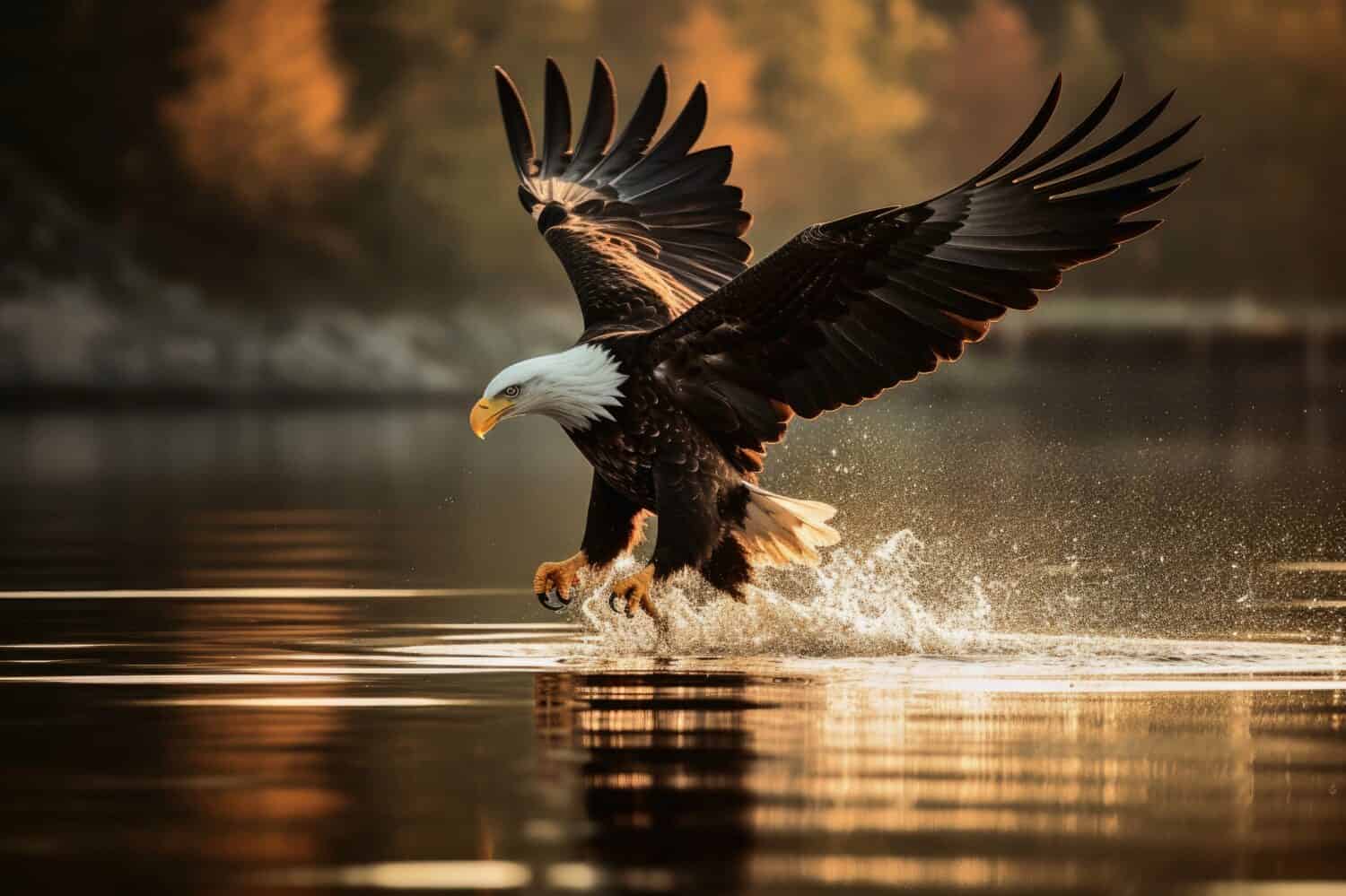
Eagles can see as far as about two miles (3,2 kilometers), eight times as far as humans.
©MP_Foto/Shutterstock.com
Hillsborough River State Park, north of Tampa, provides a unique opportunity to witness bald eagles in a lush subtropical setting. Known for its lush subtropical landscapes and pristine waterways, the park offers an ideal environment for both resident and migratory bald eagles.
The park’s dense forests, towering cypress trees, and hardwood hammocks create excellent nesting sites for bald eagles. These eagles build their nests high in the trees, often near water sources, allowing them easy access to fish, one of their primary food sources. Hillsborough River State Park visitors have a remarkable opportunity to witness bald eagles in their natural habitat.
To enhance the experience, visitors can explore the park’s hiking trails, especially those that meander along the riverbanks. Bald eagles are often spotted perched high above or soaring through the air. Remember to bring a pair of binoculars and a camera, but always maintain a respectful distance from the birds to avoid disturbing them.
The park offers various recreational activities, such as canoeing and kayaking, where visitors can get closer to the areas where bald eagles are commonly seen. Paddling along the Hillsborough River provides a unique perspective and the chance to witness eagles as they hunt for fish or interact with other wildlife along the riverbanks.
Hillsborough River State Park presents a fantastic opportunity for eagle enthusiasts to observe these majestic birds amidst a subtropical paradise. It is an ideal location for both novice and experienced birdwatchers. Always prioritize the well-being and preservation of these magnificent creatures by maintaining a respectful distance.
When to Sight Bald Eagles in Florida
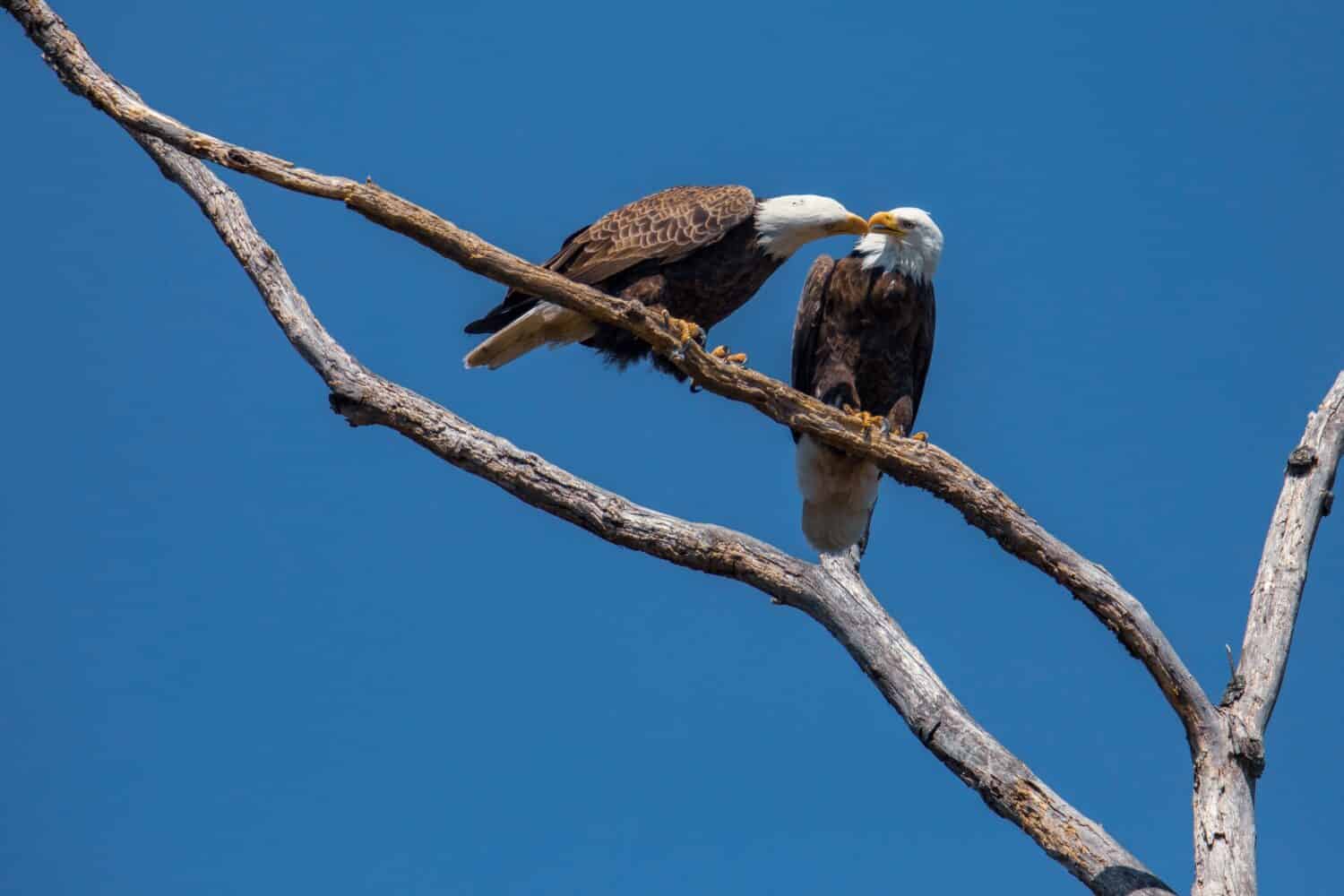
Bald eagles have a mate for life, only finding a new one if one of them dies.
©EleanorAbramson/Shutterstock.com
Thanks to Florida’s warm temperatures and extensive food resources, most bald eagles stay in the state year-round. Young adults and non-breeding eagles migrate out of Florida in spring and summer and return with the arrival of winter.
Winter is the best opportunity for bald eagle sightings, from November to March. Plus, egg laying often begins in early November. During the breeding season, bald eagles are highly active as they care for their nests and young eaglets. Bald eagles’ eggs start to hatch around 35 days after incubation. If you visit in the winter, you might be lucky enough to observe young eagles in the nest.
Bald Eagles’ Population in Florida
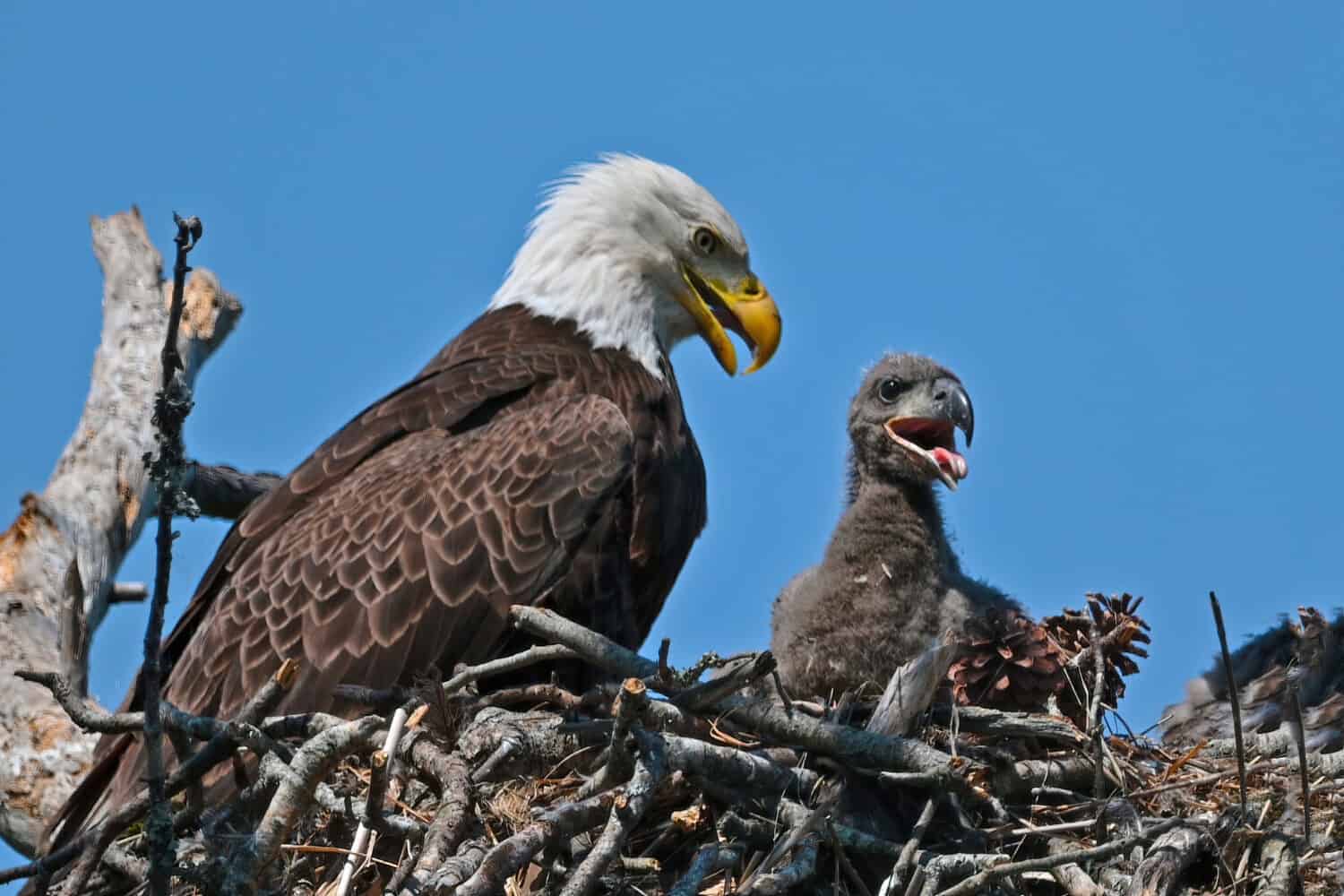
Bald eagle females typically lay two eggs a few days apart.
©Brian E Kushner/Shutterstock.com
The presence of bald eagles in Florida is a real success story in terms of conservation efforts. Once listed as an endangered species in the United States, they have remarkably recovered in the Sunshine State.
In the 1970s, their population in Florida was severely threatened due to habitat loss, water pollution, and harmful pesticides like DDT. At its lowest point, only a few dozen nesting pairs were left in the state. Recognizing the critical need for intervention, conservationists, wildlife agencies, and environmentalists rallied to protect them. The banning of DDT and the implementation of various protective measures, including the Bald and Golden Eagle Protection Act, played a pivotal role in the species’ recovery.
Florida boasts a thriving population of bald eagles, with the third largest population in the United States behind Alaska and Minnesota. It is estimated that 1,500 nesting pairs live in the state. The exact number of eagles fluctuates yearly due to various factors. These include breeding success, environmental conditions, and food availability.
Florida’s diverse landscapes, including its numerous lakes, rivers, wetlands, and coastal regions, provide an ideal habitat for bald eagles. These birds primarily feed on fish but are opportunistic predators, also consuming waterfowl, small mammals, and carrion. As such, the state’s abundant water bodies and varied prey availability contribute to the eagles’ successful population growth.
Thanks to conservation efforts, the population of bald eagles in Florida has rebounded significantly from the brink of extinction. Thanks to the dedication of conservationists, the banning of harmful pesticides, and the implementation of protective measures, these iconic birds now thrive in the state’s diverse ecosystems.
Thank you for reading! Have some feedback for us? Contact the AZ Animals editorial team.

